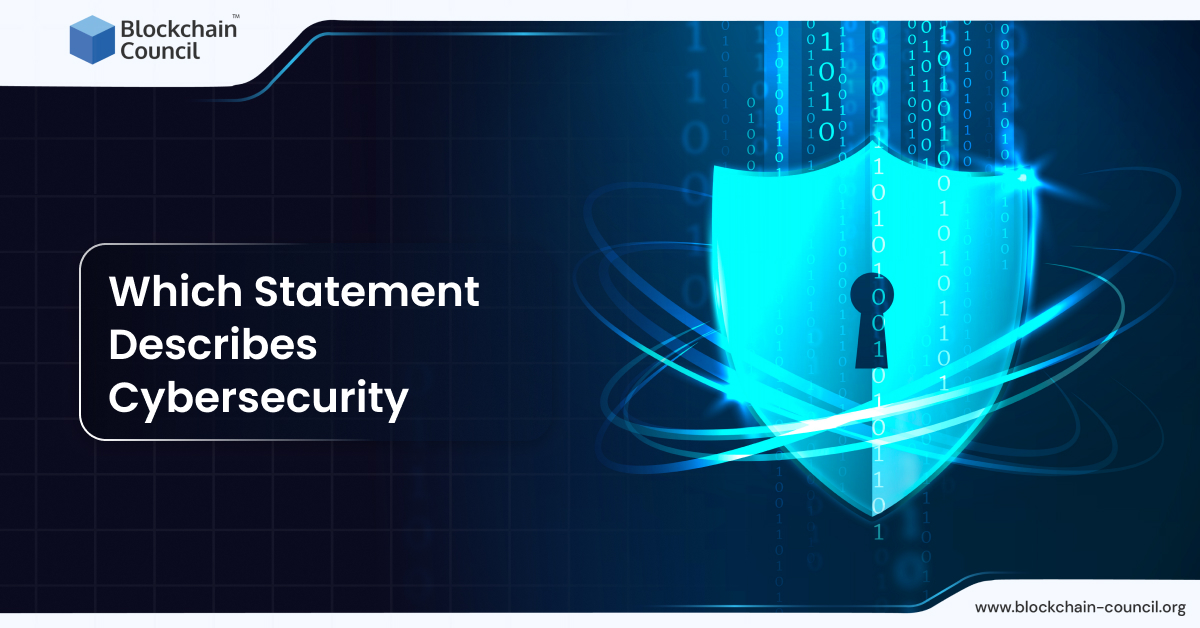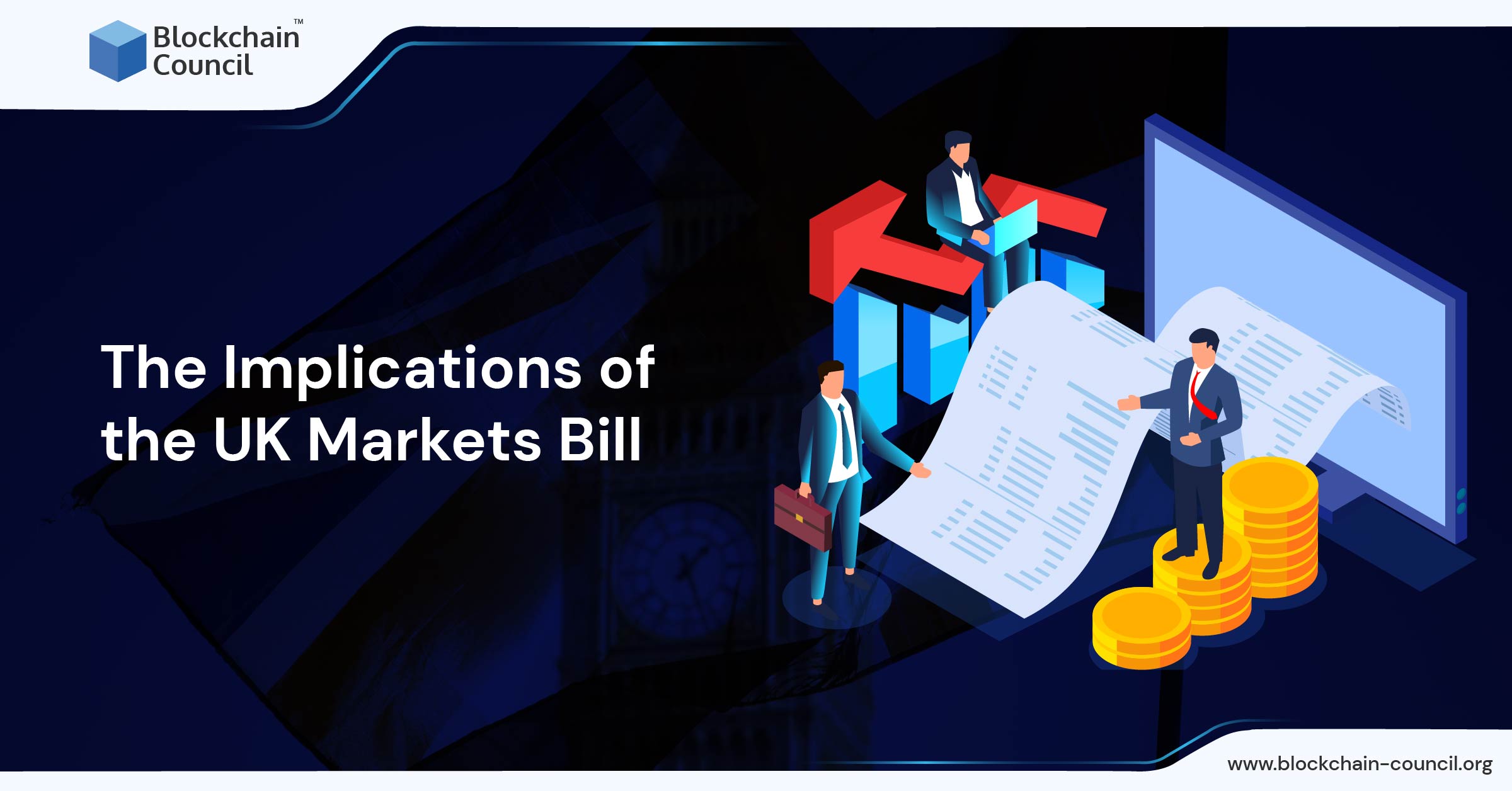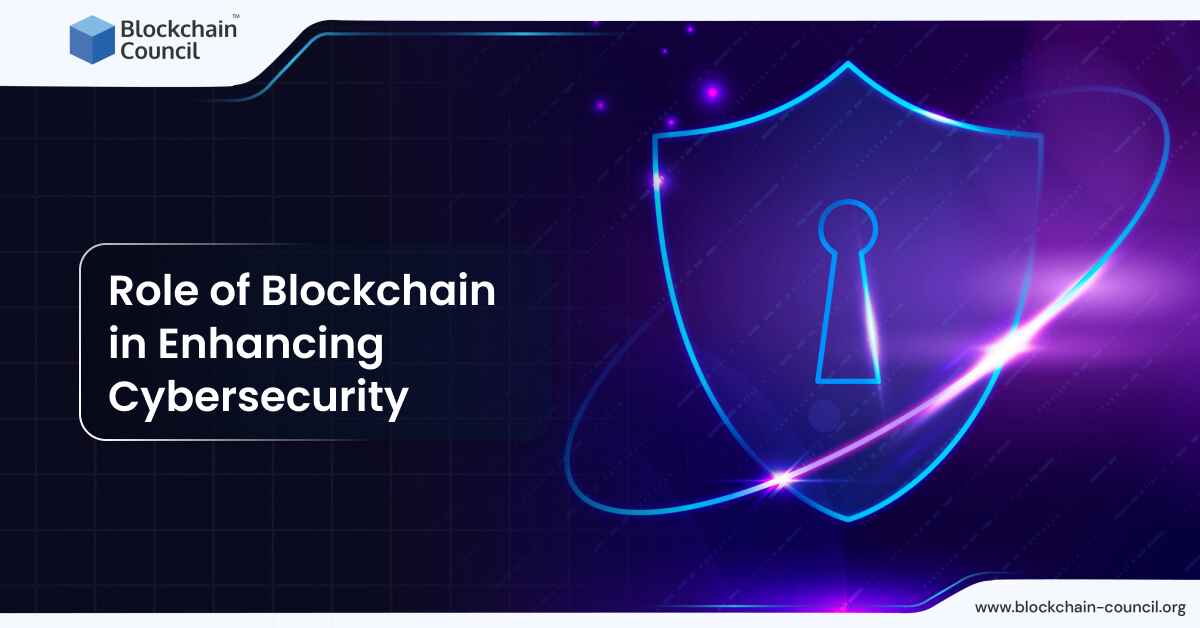
- Blockchain Council
- September 01, 2024
Cybersecurity is a term frequently heard in today’s digital age, but its exact meaning can often feel unclear, especially for beginners.
Which Statement Describes Cybersecurity?
A commonly referenced statement describes cybersecurity as a continuous effort to safeguard information, networks, and systems from digital threats that could compromise data, disrupt services, or cause harm to individuals and organisations. It comes from the 2024 Report on the Cybersecurity Posture of the United States.
What is Cybersecurity?
In simple terms, cybersecurity involves methods, tools, and steps aimed at safeguarding systems, networks, devices, and data from online threats. These threats can include hacking, data theft, malware, and other malicious activities aimed at disrupting operations or stealing sensitive information.
It is like the security system of a house, but instead of protecting physical property, it guards digital assets. Just as you would lock your doors to keep intruders out, cybersecurity uses tools and practices to block unauthorized access to your digital spaces.
Why is Cybersecurity Important?
Kevin Mandia, CEO of Mandiant at Google Cloud, highlighted at the RSA Conference in 2024 that “cyber intrusions are paying off . . . the question is, what do we do about it?” This statement reflects the ongoing challenge in the cybersecurity landscape: preventing and responding to cyber threats that are continuously evolving.
Global cybercrime expenses are expected to hit $10.5 trillion each year by 2025. This rise is fueled by a yearly 15% surge in cyberattacks. In 2023 alone, there were 7.6 trillion intrusion attempts, showing a significant rise in cyber threats across various sectors, including finance, healthcare, and manufacturing.
The CrowdStrike incident, for example, demonstrated that even sophisticated systems can be compromised, leading to widespread consequences. Moreover, the shift towards remote work has amplified vulnerabilities, with breaches associated with remote work costing on average $173,074 more than those without a remote work factor.
Therefore, cybersecurity is crucial because, without it, data, personal information, and business operations are at risk of being exploited by attackers.The main objective is to maintain the privacy, accuracy, and access of information, often known as the CIA triad in cybersecurity.
Main Aspects of Cybersecurity
Cybersecurity includes various layers of defense, such as:
- Network Security: This protects internal networks by tracking data flow and stopping potential dangers. Tools like firewalls, intrusion detection, and data encryption are commonly used here.
- Endpoint Security: Protects devices connected to a network. These may include smartphones, smart TVs, computers, etc.. Key tools in this category include antivirus software and endpoint detection and response (EDR) solutions.
- Application Security: This area focuses on securing software to prevent flaws that attackers might exploit. You must update software and make sure to apply security patches regularly to address vulnerabilities.
- Cloud Security: As more information shifts to the cloud, protecting this space becomes important. Cloud security involves implementing measures that block unauthorized access, prevent data leaks, and mitigate risks linked with cloud-based services.
- Data Security: This is about protecting information whether it’s stored, in use, or being transmitted. Encryption, tokenization, and strict access controls, these are some typical methods you can use to protect sensitive data.
- Operational Security: Manages how data is handled and protected, covering permissions and procedures for accessing systems and information.
- End-User Education: Provides users with the skills to spot possible threats, like phishing emails or strange links, and react properly.
Common Cyber Threats
Cybersecurity faces various evolving threats, some of which are increasingly sophisticated:
- Malware: Harmful programs created to interrupt, harm, or get into computer systems without permission. This category covers viruses, worms, and ransomware.
- Phishing: A method where attackers deceive people into giving sensitive details, like passwords, by pretending to be reliable sources.
- Ransomware: A form of malware that locks access to a victim’s data, demanding a ransom payment for the release of the data.
- Zero-day Exploits: These are attacks launched on the same day a security flaw is identified, taking advantage of the vulnerability before it is patched by developers.
- Social Engineering: Involves tricking people to bypass security rules or share private information.
- Denial of Service (DoS) Attacks: Attempts to overwhelm a network or service, causing it to stop functioning properly.
How to Improve Cybersecurity?
- Regular Software Updates: Updating systems and applications regularly helps ensure the latest security patches are in place, which reduces vulnerabilities.
- Strong Passwords and Multi-Factor Authentication (MFA): Using hard-to-guess passwords and turning on MFA adds more security to your accounts.
- Employee Training: For businesses, training employees about recognizing phishing attempts and following cybersecurity best practices is essential. Investing in professional development through reputable programs, such as Certified Cybersecurity Expert™, can significantly strengthen your organisation’s security posture by equipping staff with practical, up-to-date skills.
- Backups: Regularly saving copies of your data can reduce the damage from ransomware and other cyber attacks.
- Incident Response Planning: Being prepared with a plan on how to respond to cyber incidents can minimize damage and recovery time.
The Importance of Technology in Cybersecurity
Technology plays a key role to fight against cyber threats. Progress in AI (artificial intelligence) and machine learning has introduced new methods for spotting and managing cyberattacks. For example, AI can examine traffic patterns in networks to detect abnormal activities that could indicate a possible attack.However, cybercriminals can also misuse these technologies. As devices like the Internet of Things (IoT) become more embedded (through smart devices) in daily life, the risk of attacks increases.
Conclusion
Cybersecurity goes beyond just technology—it plays an important role in daily life in our digital age. As cyber threats become more frequent and complicated, grasping and using basic cybersecurity principles is crucial for all individuals. Being vigilant and taking preventive actions will allow you to create a safer online environment for yourself and others.




































































 Guides
Guides News
News Blockchain
Blockchain Cryptocurrency
& Digital Assets
Cryptocurrency
& Digital Assets Web3
Web3 Metaverse & NFTs
Metaverse & NFTs
